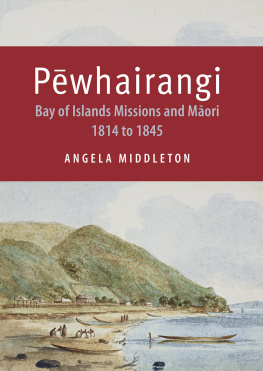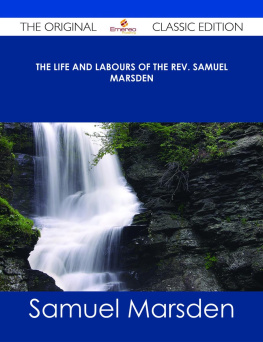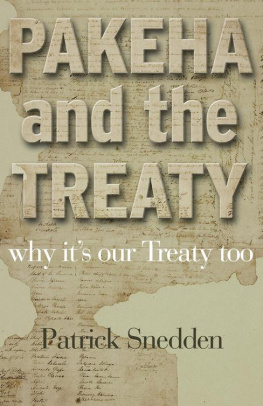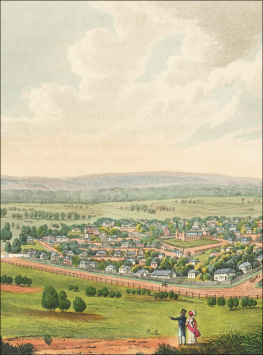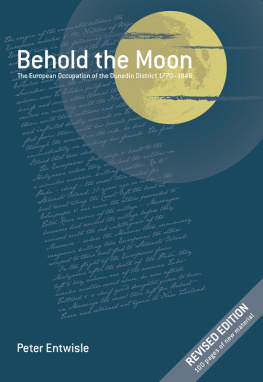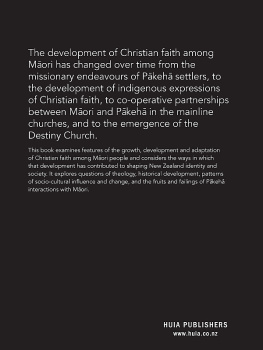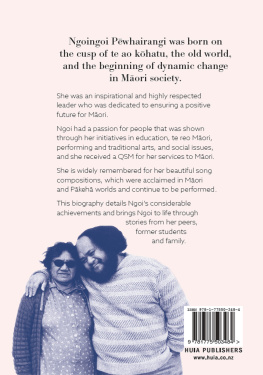



Published by Otago University Press
PO Box 56 / Level 1, 398 Cumberland Street,
Dunedin, New Zealand
E:
W: www.otago.ac.nz/press
First published 2014
Copyright Angela Middleton 2014
The moral rights of the author have been asserted.
ISBN 978-1-877578-53-3 (print)
ISBN 978-1-98-859220-6 (EPUB)
ISBN 978-1-98-859221-3 (Kindle)
ISBN 978-1-98-859222-0 (ePDF)
A catalogue record for this book is available from the National Library of New Zealand. This book is copyright. Except for the purpose of fair review, no part may be stored or transmitted in any form or by any means, electronic or mechanical, including recording or storage in any information retrieval system,without permission in writing from the publishers. No reproduction may be made, whether by photocopying or by any other means, unless a licence has been obtained from the publisher.
Publisher: Rachel Scott
Editor: Wendy Harrex
Design/layout: Fiona Moffat
Index: Robin Briggs
Ebook conversion 2019 by meBooks
Published with the assistance of Creative NZ

Frontispiece: Night Scene, New Zealand, from the Missionary Register in 1837.
Wearing a greatcoat and cap, James Kemp is shown preaching at a Bay of Islands village.
Title page and title verso: Medal presented to Te Pahi, 1806. Image courtesy of Sothebys Australia
Contents
Exchanges and travels before 1814; The Mori world; The English evangelicals; The mission evangelicals at Port Jackson, 18101814; Ngpuhi in 1814: Whnau, hap and iwi
Missionary arrivals and Rangihoua, 1814; The land transaction and Marsdens departure; Ruataras demise; The Hohi settlers; Organisation and trade; Hohi or Waitangi?; Hohi, the settlement; Marsden returns, 1819 and 1820; Thomas Kendall, Hongi and Waikato visit England; Kendalls expulsion; Hohi in decline
Civilise, then Christianise; Mori horticulture and agriculture; The arms trade; The musket wars; The wars draw to an end; Entanglements: unexpected outcomes
Hongi Hikas mission; Kerikeri women and mission life; Conflict within the mission; Kerikeri after the Butlers; The Clarke era; Hongi Hikas death; The Stone Store; The Kemp era; From tapu to noa
Te Koki and Hamu of Ngti Hine; Marianne and Henry Williams arrive, 1823; Stand-offs and encounters; The mission community; The mission at work; The mission schools; Expansion and change, 1840
The Clarke, Davis and Hamlin years; William and Jane Williams arrive; Richard Taylor takes over; A mission farm; The battle with the Prince of Darkness; Winds of change; Waimate, a bishops palace?; Selwyns Waimate institutions; Selwyn abandons the north
Traces of Te Puna; Great things has been done; A lonely, difficult and profitless life; The mission and the p
Te Tiriti o Waitangi; Economic decline in Pwhairangi; Tikanga or British law?; Ngpuhi divisions and politics; Hekes felling of the flagpole(s); The sacking of Kororreka; Waimate, the whi tapu; After Kororreka; Puketutu; haeawai; Waimate, occupied territory; Ruapekapeka, the final battle; Peace making; Still the conversation lives
P whairangi, or more literally, Te P-o-whairangi, the Bay of Islands, has been a place of intrigue and mystique for me since the late 1990s. As a student at that time, I was searching for the place of interaction or even the earliest interactions between Mori and Pkeh, to form a focus of my PhD, in order to explore the foundations of our bicultural world through archaeology and the written record. I learnt about the Ngti Manu leader, Pmare II, and his stronghold p of tihu, a place that rivalled Kororreka (todays Russell) in the history books. Pmare II was a man who had seized the opportunities offered by encounters with Europeans coming into the Bay of Islands in the early to mid-nineteenth century; tihu was a place ripe for investigation through archaeological techniques to explore this kind of interaction on the ground. I met with Ngti Manu leaders at Karetu, my research was blessed and I was given a woven flax kete before I left to visit taonga at the Smithsonian Museum and do further research there in 2000, but this project was not to go ahead.
Since that time, the knowledge in that kete has increased as my focus shifted around Pwhairangi. In the north of the Bay, I encountered a landscape redolent with the kind of interaction I was searching for, where the tpuna Te Pahi and Ruatara had actively sought engagement with Europeans. The Mori and missionary landscape at Te Puna and Hohi spoke loudly of this. It seemed a pristine archaeological landscape in 2000, with evidence of the two mission stations nestled on either side of the terraces and defences of the towering Rangihoua p. Te Puna became the focus of my PhD research, revealing the nature of this isolated and marginalised mission station, its inhabitants often dependent on the hap of Te Hikut and Ngti Torehina based at Rangihoua. Beyond Te Puna, I also explored the nature of the Church Missionary Societys (CMS) New Zealand missions in comparison with other missions in the New World, the bigger picture of colonisation and missionisation.
I had long thought about this particular Pwhairangi book, a book that would explore the detail of the expansion of the CMS missions in the Bay of Islands and the changing nature of their interactions with Ngpuhi, in particular, as missions were established under the auspices and in the territories of different hap. What began as a small party of three mission families and ticket-of-leave convict labourers in 1814 had led to a burgeoning settler population, land speculation and unanticipated dynamics some 25 years later, followed by the arrival of the British administration in early 1840. Ngpuhi were significant actors in these events, but the outcomes were not as expected. I was keen to uncover the major players, important places and fine details in this significant story. Funding applications followed and in 2012 I was the recipient of a Claude McCarthy Fellowship, as well as a grant from the Ministry for Culture and Heritage. I was very grateful to finally have the opportunity to focus on this project.

Team at Hohi, 2012
The kete of knowledge returned to Ngti Manu and Ngti Hine in 2010, when I was one of the researchers working on the Te Aho Claims Alliance report to the Waitangi Tribunal, completed in 2013. This took me back to my earlier connections in the south of the Bay. More recently, as the bicentenary of the Hohi mission drew closer, Ian Smith, of the University of Otago, and I had the opportunity to work at Hohi and to explore what might well be considered its sacred ground, where leaders Te Pahi and Ruatara once welcomed the earliest Pkeh settlement of mechanic missionaries. Our archaeological investigations, carried out in the summers of 2012 and 2013, funded through two University of Otago Research Grants and support from the Department of Conservation, uncovered details of the Hohi mission structures and revealed aspects of daily life. This provided the window into the beginnings of mission life in Pwhairangi.
Next page
